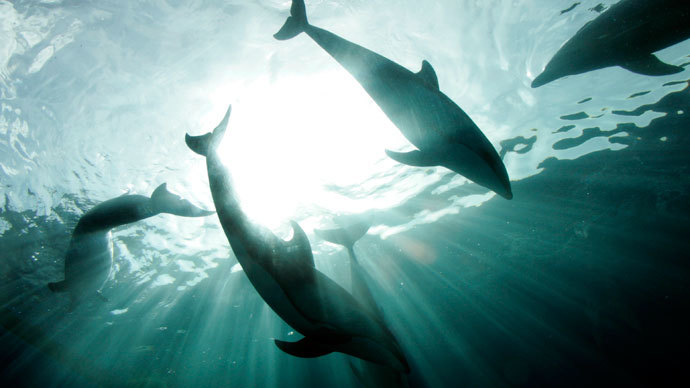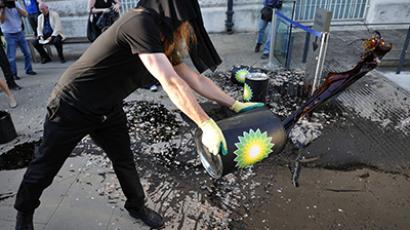Many dolphins in the vicinity of BP spill ‘not expected to survive’ – study

Dolphins swimming in the Gulf of Mexico near where a massive BP oil spill occurred in 2010 are showing signs of sickness so serious that many are not expected to survive, a new study has determined.
A team of government and academic researchers, veterinarian, biologists, and wildlife epidemiologists examined 32 dolphins in August 2011, one year after the largest oil spill in US history wiped out a swathe of the natural life in the Gulf.
The results, published Wednesday in the journal Environmental Science and Technology, found that nearly half of that 32 were found to be in “guarded or worse” condition according to the conditions spelled out by the National Oceanic and Atmospheric Administration (NOAA). A quarter of the dolphins were underweight and 17 percent were in grave enough condition that they were “not expected to survive.”
The most common problems were lung damage and low levels of adrenal stress-response hormones, a symptom that could hurt their fight-or-flight instincts.
“I’ve never seen such a high prevalence of very sick animals – and with unusual conditions such as the adrenal hormone abnormalities,” lead author Dr. Lori Schwacke wrote in a NOAA press release.
Comparing the test group with a control group located in a region of Florida not affected by the oil spill, the researchers found that the Gulf dolphins had symptoms very similar to those exhibited by mammals in lab studies examining oil exposure.
“The creased cortisol [hormone] response is something fairly unusual but has been reported from experimental studies of mink exposed to fuel oil,” the report stated. “The respiratory issues are also consistent with experimental studies in animals and clinical reports of people exposed to petroleum hydrocarbons.”
This research has already been called the strongest link between the oil spill and the impact on the multitudes of sick dolphins.
BP paid for the study but has disputed its finding, with a spokesman telling the Wall Street Journal that NOAA “still hasn’t provided BP with any data demonstrating that the alleged poor health of any dolphins was caused by oil exposure.”
The researchers did acknowledge that a large mortality event has been taking place in the region in question since February 2010, before the oil spill. At least 1,050 marine animals, including dolphins, appear to have intentionally stranded themselves on beaches in and near Barataria Bay.
The study authors wrote that they “cannot dismiss the possibility that other pre-existing environmental stressors made this population particularly vulnerable to effects from the oil spill.”
The results were published on the same day a federal jury found an engineer guilty on one count of obstructing justice in connection with the spill. Kurt Mix, a 52-year-old former BP employee, was charged with two counts of obstruction of justice for deleting hundreds of emails he exchanged with a supervisor in the weeks after the spill.
Mix was a member of the crew given the responsibility to stop the Macondo well from leaking, but he now faces up to 20 years in prison and a $250,000 fine.














